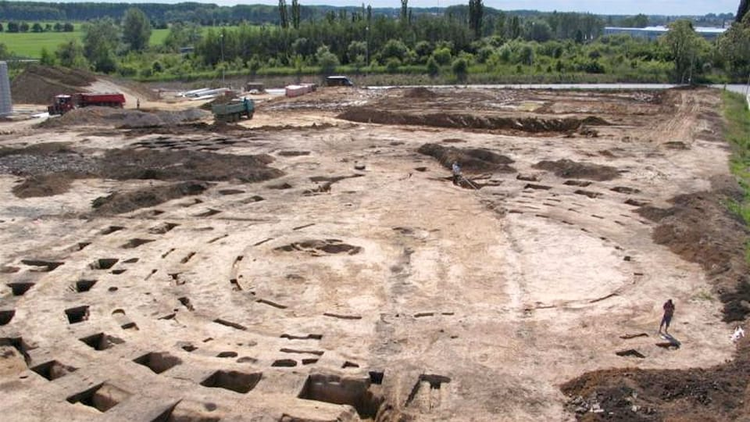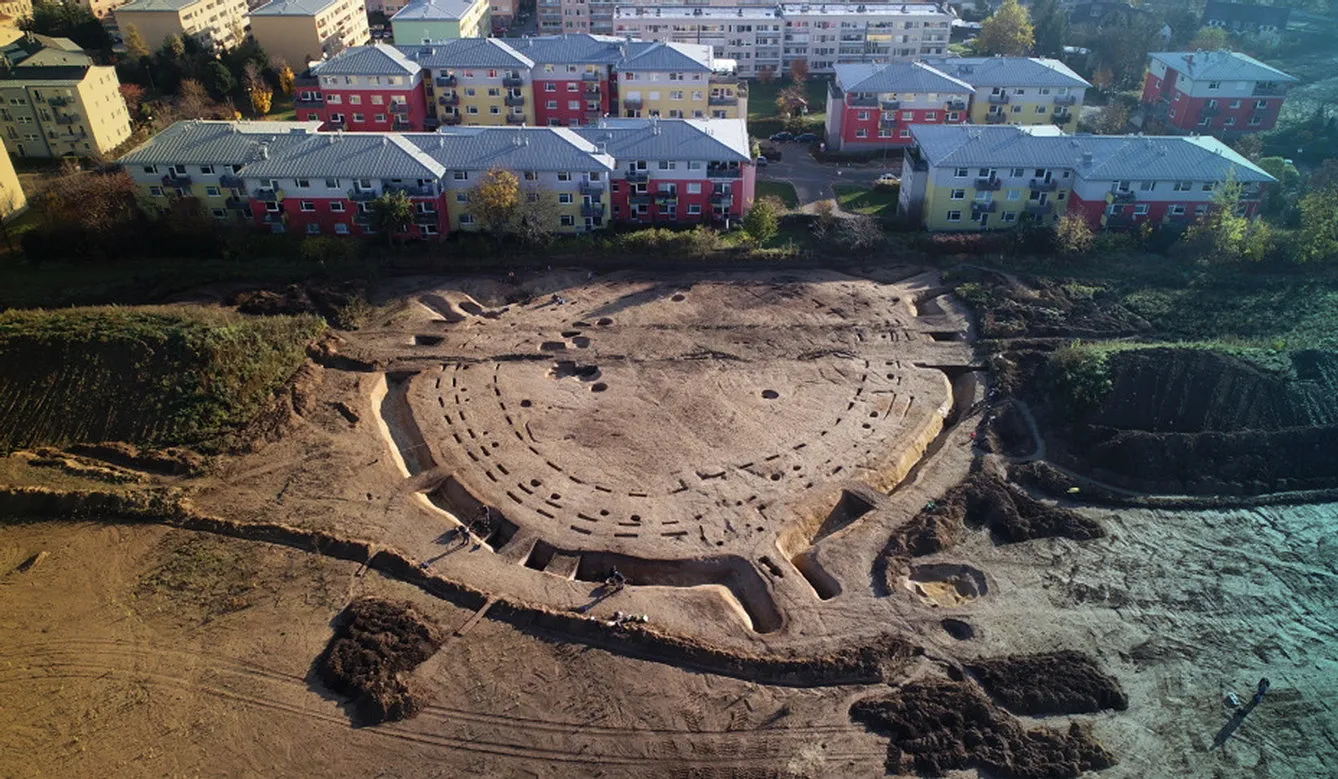Introduction
Recently unearthed near Prague, the 7,000-year-old Neolithic circular structure in Vinoř is a remarkable archaeological discovery that has significant implications for our understanding of early human societies. This structure predates both Stonehenge and the Egyptian pyramids, offering insights into the architectural and cultural advancements of Neolithic peoples.
Architectural Significance
Measuring an impressive 180 feet in diameter, this round edifice features three distinct entrances. The design suggests that it may have served a communal or ceremonial purpose, possibly acting as a gathering space for ritualistic activities or social events. The presence of multiple entrances indicates advanced planning and social organization, highlighting the complexity of Neolithic architectural practices.

Preservation of the Site
Recent excavations have revealed that nearly 90% of the floor plan remains intact. This preservation is invaluable for archaeologists, as it allows for detailed study of the structure’s layout and function. Analyzing the intact portions can provide insights into the daily lives and cultural practices of the people who built it.
Artifacts and Daily Life
Artifacts found in and around the site—such as pottery, tools, and remnants of ancient hearths—illuminate the lives of these early inhabitants. These findings can help researchers reconstruct aspects of Neolithic life, including dietary habits, technological advancements, and social dynamics. The presence of specialized tools may suggest that the site was not only a ceremonial center but also a hub of domestic activity.

Implications for Neolithic Society
The discovery of this circular structure prompts important questions about trade networks, social hierarchies, and communal activities in Neolithic Europe. The advanced construction techniques and communal features of the structure imply that its builders were engaged in complex social interactions and shared cultural practices.
Broader Historical Context
This structure’s age and design indicate that Neolithic societies were capable of significant architectural and social achievements well before the rise of known civilizations. It challenges preconceived notions about the progression of human development, suggesting that sophisticated societal structures may have emerged earlier than previously thought.

Conclusion
In conclusion, the Neolithic circular structure in Vinoř stands as a testament to the architectural ingenuity and cultural richness of ancient societies. It serves as a vital piece in understanding the complexities of human civilization’s early development, prompting further exploration into the social and cultural dynamics of Neolithic Europe. As research continues, this extraordinary site may reveal even more about the lives and beliefs of those who lived 7,000 years ago.

